How to Integrate Muscle Stimulation into Rugby Training
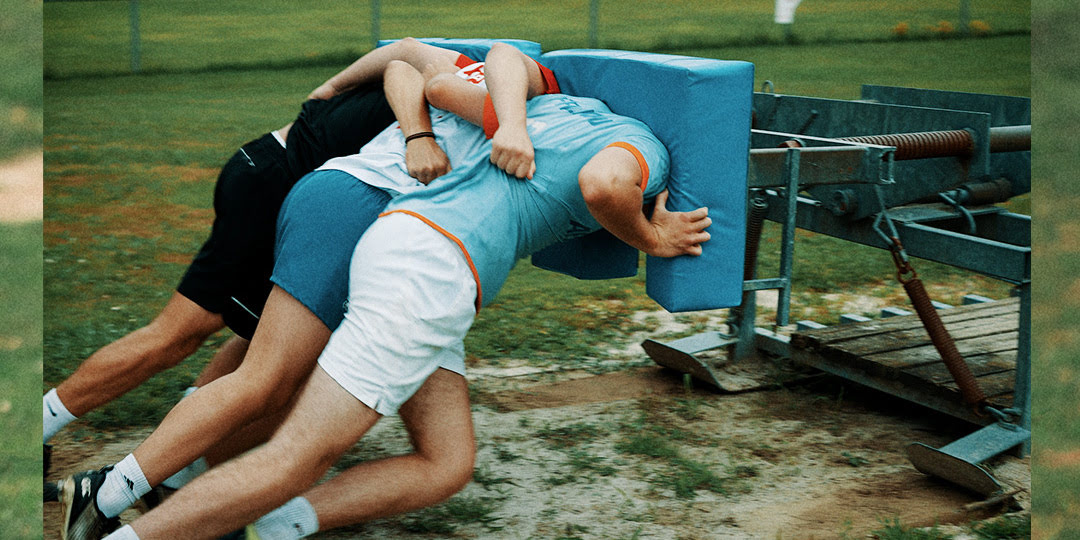
Rugby players have developed considerably in terms of physical fitness and athleticism in recent years. At the same time, effective playing time has doubled in 20 years, with increasingly intense contact (rucks and tackles multiplied by 4). There is less avoidance and more confrontation, resulting in recurring injuries.
In order to respond as effectively as possible to these increasingly strong impacts, rugby, a team sport based on combat and avoidance, requires you to be physically ready. Compex® muscle stimulation is fully in line with this development and goal.
The integration of electrostimulation is proving very useful for injury prevention and the physical muscle conditioning that will help to reduce risk factors.
But electrostimulation also helps players recover after training and matches. Also, if at some point the player is injured, then certain programs (muscle pain, capillarisation, muscle wasting, etc.) will help to speed up their return to the pitch.
We won't be able to propose a specific plan for each position, because there are so many possibilities, but rather routines that may be suitable for each player (forwards or backs) with a few key areas to focus on. We're going to suggest that you strengthen several muscle groups. The most important thing is always regularity and intensity. There's no point putting pressure on yourself and trying to do everything: it's better to select just 1 or 2 muscle groups to work on rather than all of them. It's advisable to do strength sessions on days when you're not training. You can work on several muscle groups in the same day.
As far as recovery programs are concerned, these can be carried out after hard training or after matches.
Targeting the Rotator Cuff for Rugby Training
Objectives: Prevention of shoulder injuries. Stabilise the glenohumeral joint. Strengthening the deltoids, supraspinatus and infraspinatus.
Electrode Placement:
Wired Placement
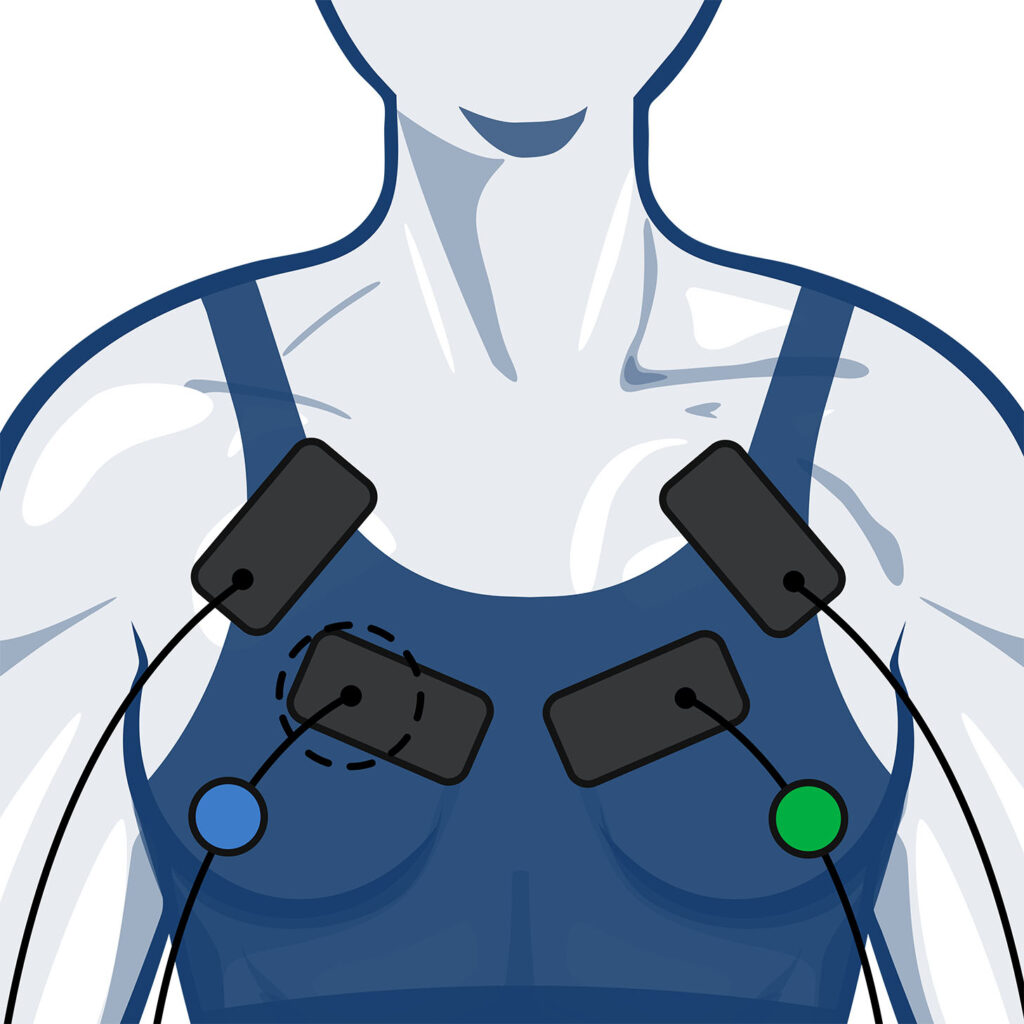
Wireless Placement
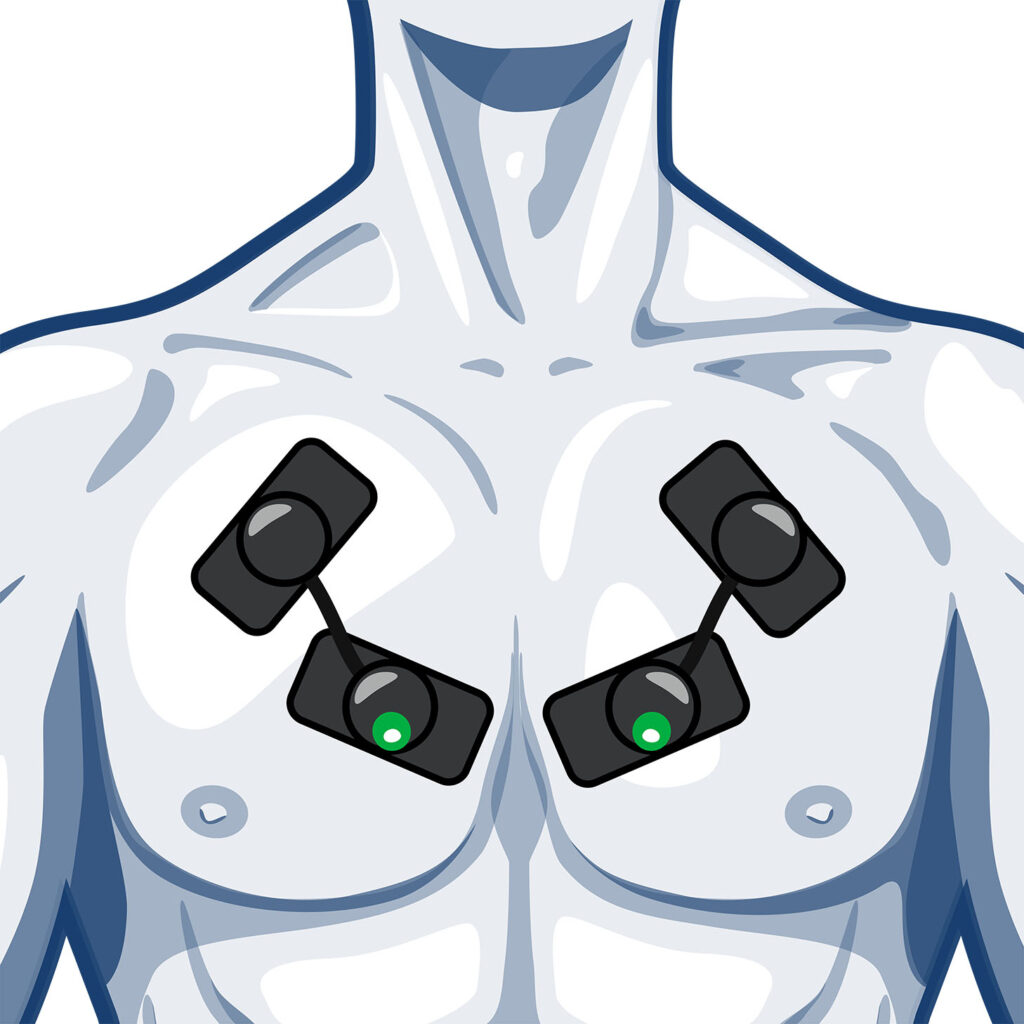
Program: Explosive strength on the shoulders. Carry out 2 cycles of 3 to 4 weeks (with 1 week off), the first cycle at level 1 then level 2.
Exercises: Front and side raises. Shoulder circuit with dumbbells.
Instructions: Isometric work. Work statically under in tension during the contraction and dynamic during the release phase. Position the pelvis correctly, keep the shoulders low and lift in the plane of the scapula. Stop the exercise when the quality of the movement decreases.
Targeting the Scapula Fixators for Rugby Training
Objectives: Prevention of back pain. Improved mobility of the thoracic cage. Maintain good posture of the trunk, toning up the back muscles (lower trapezius, posterior deltoid, latissimus dorsi, etc.).
Electrode Placement:
Wired Placement

Wireless Placement

Execution: When the stimulator triggers the contraction, pull the elastic bands towards you. Hold the position until the stimulation contraction is complete. The work can be unilateral or bilateral; in other words, you can work with both arms simultaneously or work the right arm first, then the left.
Starting Position:
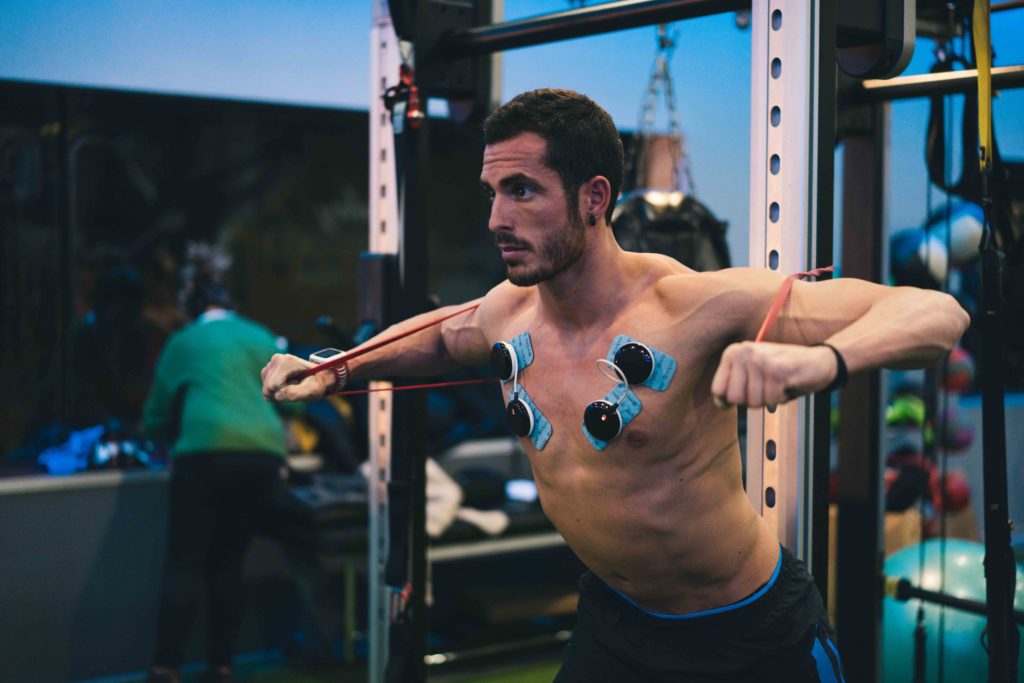
Final Position:
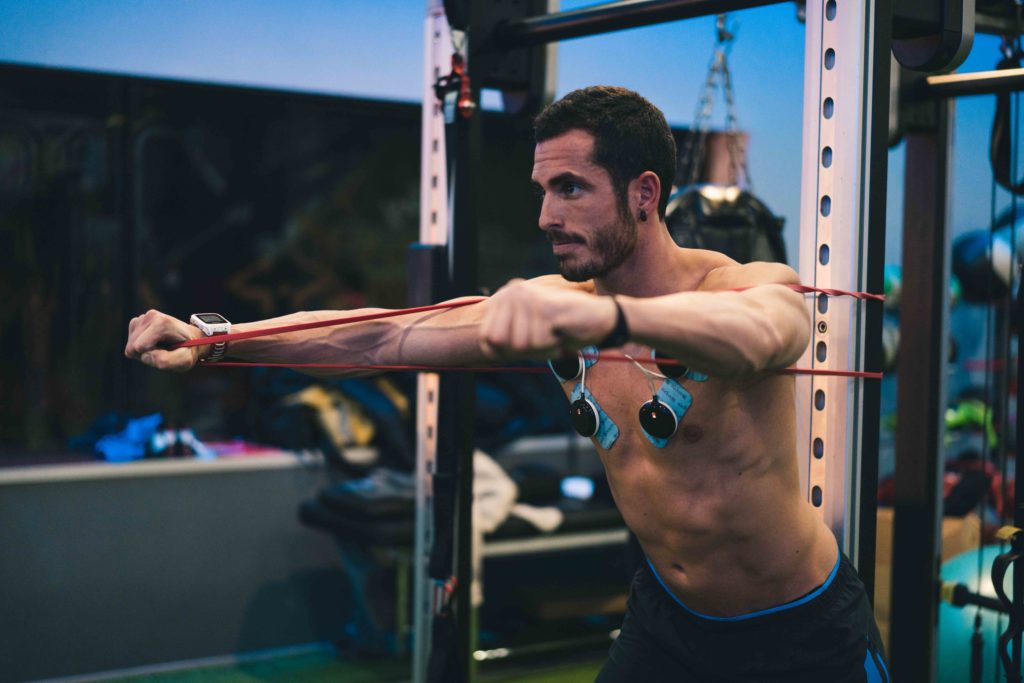
Program: Resistance or Strength. Carry out 2 cycles of 3 to 4 weeks (with 1 week off), the first cycle at level 1 then level 2.
Improving Core Strength
Objectives: Maintain and protect the spine, strengthen the abdominal and back muscles in depth (spinal muscles, rectus abdominis and transverse abdominis). Improves the transmission of forces between the upper and lower body.
Exercises: Frontal, lateral, dorsal
Electrode Placement:
2 possible wired placements
Wired Placement
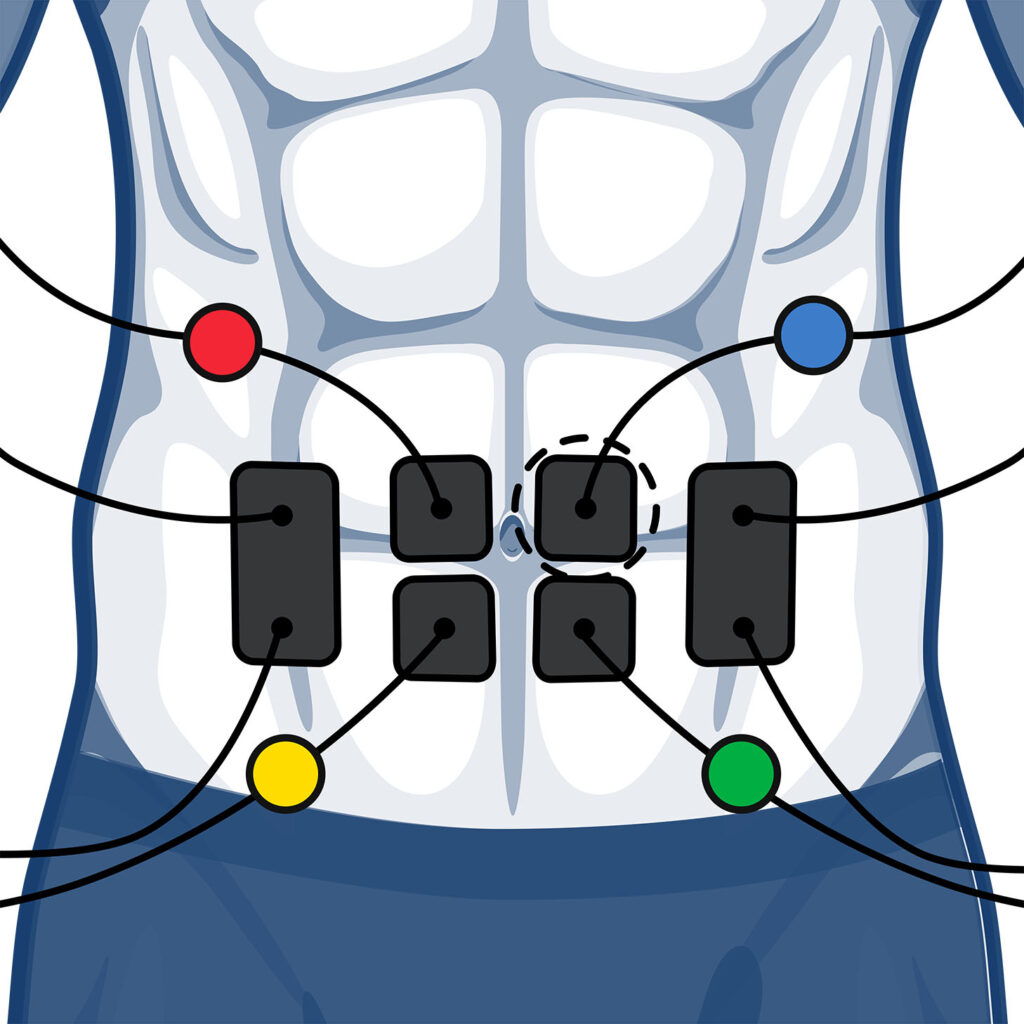
Wireless Placement
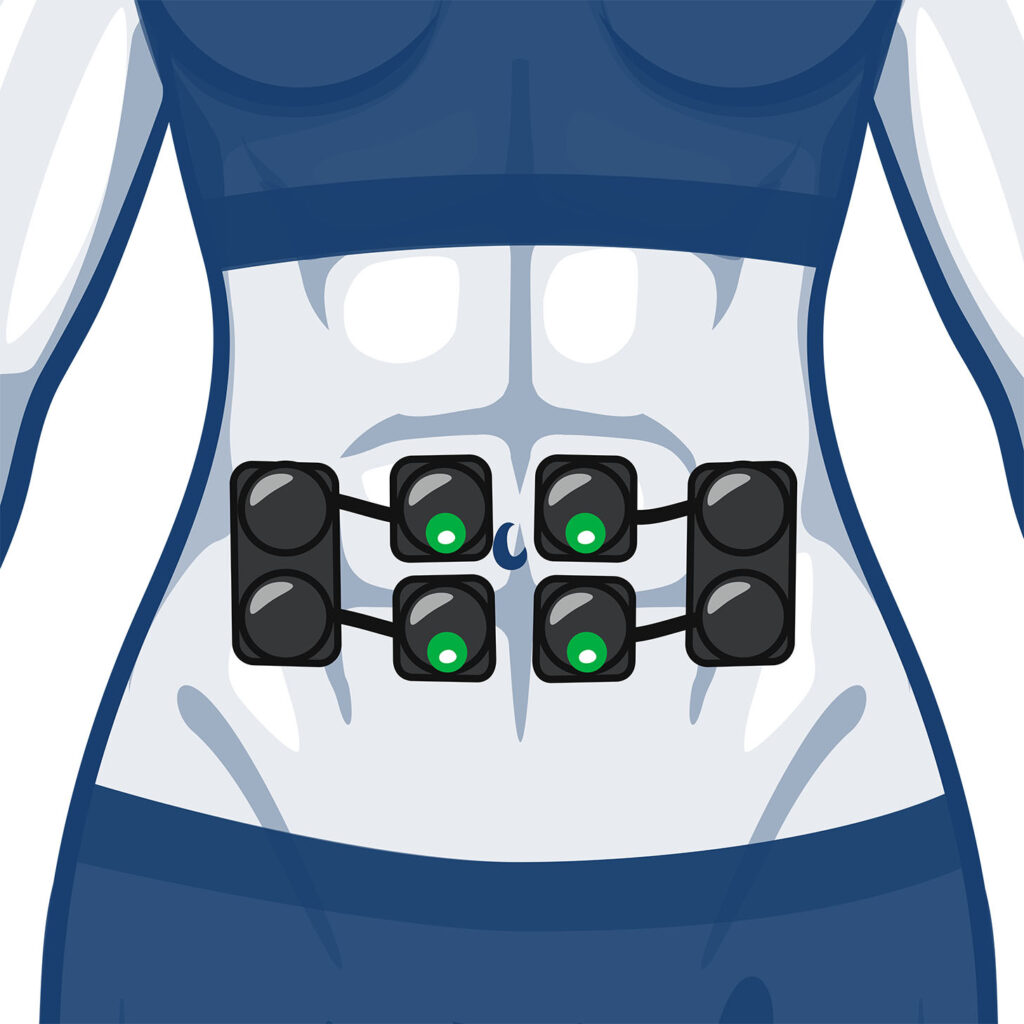
Program: Combined training of the abdominal muscles and lower back. Do 3 sessions a week for 6 weeks, then 1 session a week for maintenance.
Instructions: Static plank work in tension during the contraction, change positions during the release phase. Maintain hip and shoulder alignment with a combined contraction of the abdominals and buttocks.
Quads and Hamstrings Training for Rugby
Objectives: Prevention of lower limb injuries. Strengthen the vastus lateralis and rectus femoris, glutes, hamstrings and abdominal belt, depending on the exercises chosen.
Electrode Placement:
Wired Placement
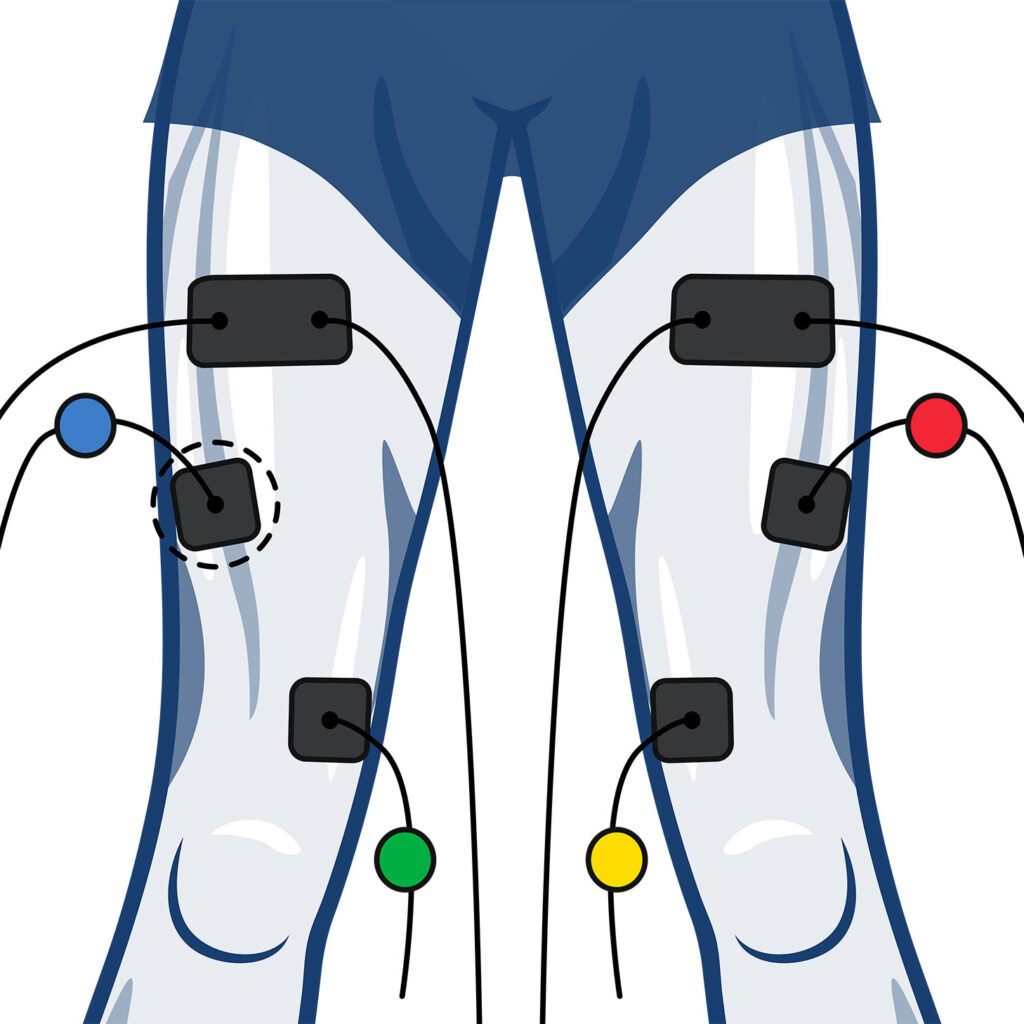
Wireless Placement
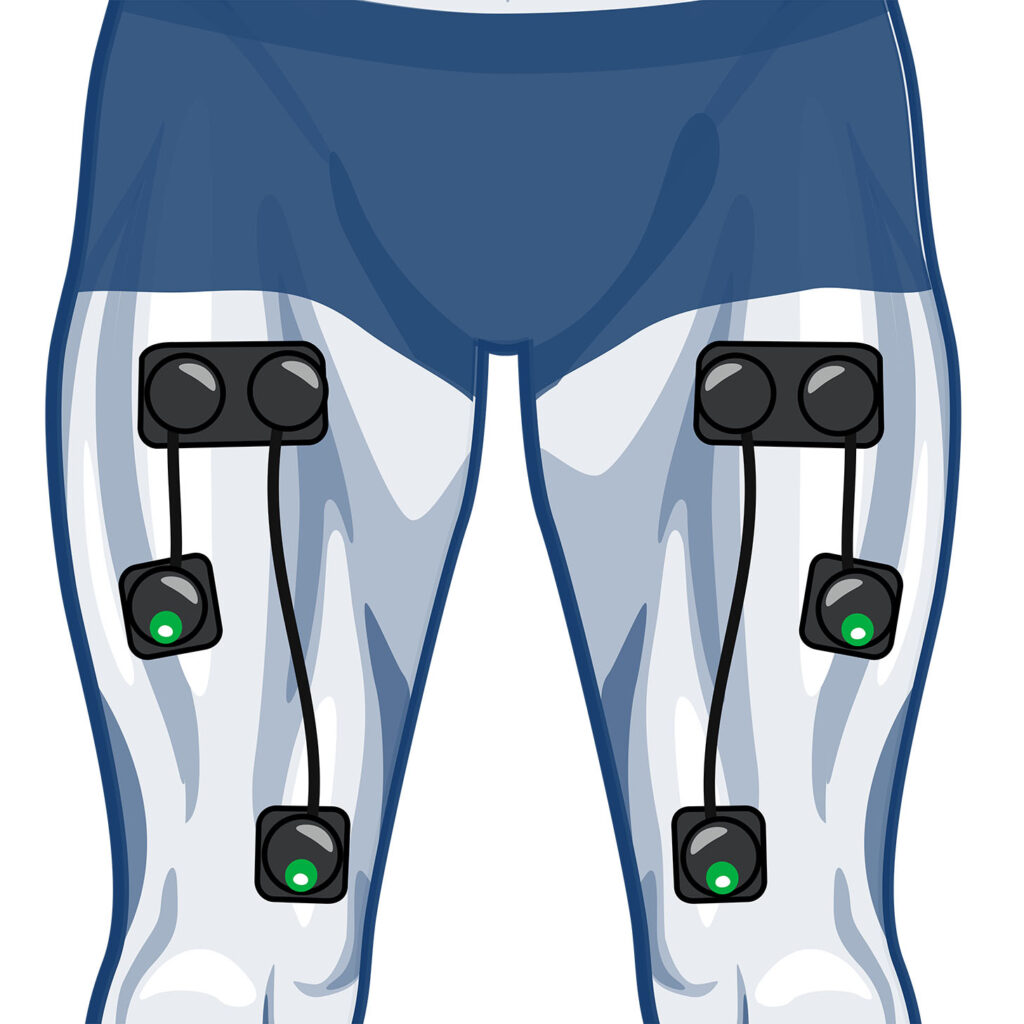
Exercises: Half-squat, single-leg bend, lunges, mini-elastic…
Program: Resistance, Strength or Explosive strength on the thighs. Do 2 cycles of 3 to 4 weeks (with 1 week off), the first cycle at level 1 then level 2. At least 3 sessions per week, then at the end of the 2 cycles, keep one session per week for maintenance.
Instructions: Isometric work under tension with load (bodyweight). Ensure good pelvic control and keep the spine straight and the knees in line with the feet. Stop the exercise when the quality of the movement decreases. Squats, lunges, platform balances, etc.
Warming Up Muscles for Rugby
Objectives: Prevent old injuries (ischios, shoulders, etc.). Complete the voluntary warm-up. Activate fast twitch fibres.
Program: Warm-up and/or Potentiation on the primary working muscles.
Instructions: Warm-up for specific muscle activation (in less than 10 minutes) before training or a match, during half-time, etc.
Potentiation is used to improve the contractility of fast fibres and lasts less than 4 minutes, helping to boost speed for the backs, and jumps for the forwards, etc.
Muscle Recovery and Capillarisation
Objectives: to speed up the muscle recovery process after intense training or matches (drainage, reduced muscle pain and tension) with the different recovery programs. Optimise your performance before a match with the capillarisation program (useful during the final stages or the training period).
Program: Recovery or Capillarisation on the muscles that have mainly been worked. You can also use our Compex Ayre™ compression boots for leg muscle recovery.
Instructions: Do your recovery session within 2 hours of a high-intensity training session or match. Connect the quadriceps and calves together to save time.
The same applies to capillarisation, which can be used the day before a match, but also to supplement endurance training or to manage certain injuries (in consultation with the medical staff).

Pain Prevention and Management for Rugby
Objectives: To prevent ankle, knee and also shoulder sprains through specific strengthening work.
As rugby is a sport with a high risk of injury, we can also relieve certain types of pain.
Program: Preventing ankle sprains (see the sheet), TENS, muscle pain (cervical, lumbar, ischial…).
Instructions: Use TENS during the acute pain phase (severe pain such as acute tendinopathy) and the muscle pain program for the chronic phase (also for persistent muscle contractures). This list of routines is far from exhaustive, and there are still many possibilities:
- Specific strengthening of the hamstrings to prevent stretching.
- Biceps / Triceps strengthening (combined with dumbbells).
- Strengthening the pectoral muscles (combined with dumbbell bench press).
- Strengthening the adductor muscles (combined with elastic bands) to prevent pubalgia.
Do not ignore pain. Consult a doctor if you experience pain that is severe and/or lasts for too long.
Proven Effectiveness
Backed by clinical studies proving their effectiveness, Compex stimulators also belong to the category of Class II medical devices and meet the requirements of the European Medical Standard 93/42 EEC.
Compex - Always with you
We're on the side of athletes, amateurs and also ordinary people. From the search for better performance to post injury recovery, from post fatigue massage to pain treatment. At Compex, we have just one goal: people's well being.
Read our experts' advice on the official blog, catch the latest Compex news by subscribing to our newsletter. You can watch our videos on the YouTube channel and also follow us on Facebook and Instagram to stay up to date.




